As an entrepreneur, you know how important it is to stay ahead of the competition. With the rise of mobile technology, the beauty and wellness industry has been revolutionized. With the help of custom beauty app development, you can create a beauty app that will help you reach more customers and increase your profits.
At Topflight, we understand the importance of staying up to date with the latest technology and trends. That’s why we specialize in helping entrepreneurs create healthcare-related software tailored to their customer’s needs. With our extensive experience in developing beauty apps like Geneium and GoodSkin, our team of professionals is well-equipped to address all the intricacies involved in building such software. I hope you have your cup of coffee ready because it’s time to dive right in.
Top Takeaways:
- Understand Your Audience: One of the key elements of a successful beauty app is understanding your target audience. Identifying their needs, preferences, and habits can help you tailor an application that truly delivers value. Our experience with Geneium showed that an intuitive user interface and personalized recommendations significantly improved user engagement and retention.
- Invest in Quality Development: The technical aspects of your app, such as its performance, security, and integrations, play a crucial role in its success. During the development of GoodSkin, we prioritized creating a seamless user experience with fast load times, secure payment gateways, and smooth integrations with other systems, such as booking platforms and social media.
- Iterate and Improve: The work doesn’t stop after the initial launch of your digital product. It’s essential to continually gather user feedback, analyze usage data, and make necessary improvements to keep your app relevant and competitive. We’ve found that a proactive approach to updates and enhancements significantly contributes to long-term success.
Table of Contents:
2. Beauty Services App Must-Have Features
3. Technology Stack for Beauty Apps
4. 5 Steps to Create a Beauty App
- Step 1: Define your goals & objectives
- Step 2: Research & competitor analysis
- Step 3: Create an app concept
- Step 4: Choose the tech stack
- Step 5: Develop & test
5. Challenges in Beauty App Development and How to Overcome Them
6. Cost of On-Demand Beauty Services App Development
Beauty App Market Overview
The beauty app market in the US is witnessing a significant surge, driven by the increasing demand for beauty and wellness services on mobile devices. With the rise of smartphones and technological advancements, beauty apps have become a convenient and accessible way for users to explore and engage with various beauty services.
But just how big is this market?
According to Statista, in 2021, the revenue in the Beauty & Personal Care market in the United States amounted to about $17.8 billion. And it’s not just about revenue. Beauty applications are becoming increasingly popular among users. As per a report by Sensor Tower, top beauty apps in the US, like Sephora and Ulta, saw a whopping 70% increase in downloads in 2020 compared to the previous year.
So, what makes these applications so successful? It’s the ability to offer a personalized, interactive experience. Take the case of Geneium, which transformed bland PDF reports into an engaging platform that offers personalized skincare advice based on customers’ DNA analysis. Or consider GoodSkin, which successfully ‘uberized’ cosmetic boutique services, creating an innovative, healthy-aging skincare app that streamlined the experience for both customers and clinic staff.
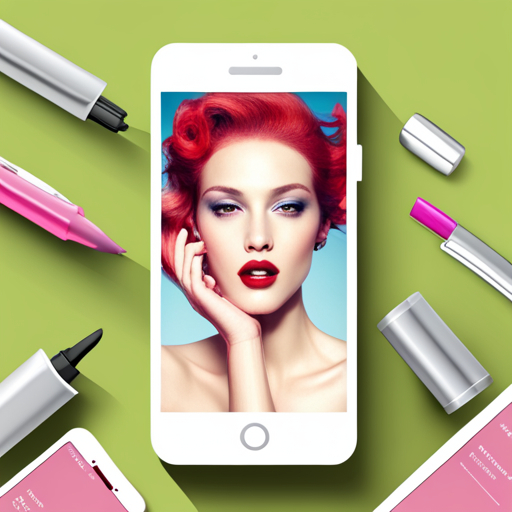
As we delve deeper into beauty app development, these success stories offer valuable insights. They underscore the importance of creating an engaging, user-friendly interface, ensuring robust security, integrating with existing routines, and, most importantly, personalizing the experience.
Are you ready to take your place in the rapidly growing beauty software market?
Market Trends
Several key trends are shaping the beauty app market. Firstly, there is a growing focus on personalized beauty experiences, with apps offering customized recommendations based on individual preferences and needs. Additionally, virtual try-on features are gaining popularity, allowing app users to virtually test makeup products and hairstyles before making a purchase. Integration with augmented reality (AR) technology is also on the rise, enabling users to visualize how different beauty products will look on them in real time.
In a gist, from the tech standpoint, founders diving into on-demand beauty app development will have to deal with the following:
- Artificial Intelligence (and more specifically, face recognition techniques)
- Augmented Reality (to overlay positive after-effects)
Types of Beauty Apps
There are various types of beauty apps catering to different aspects of beauty and wellness. Some popular categories include makeup, skincare, haircare, nail art, and fitness and wellness. Each category offers unique features and functionalities to enhance the user’s beauty and self-care routines.
Here are some key categories worth considering for your beauty services app development:
- Plastic Surgery: These apps provide information about various plastic surgery procedures, allow virtual consultations with surgeons, and may even offer visual simulations of potential results.
- Cosmetics: Cosmetics applications often include virtual try-on features for makeup products, personalized product recommendations, and tutorials.
- Oral Hygiene: These solutions aim to improve users’ dental care routines. They might include features such as brushing timers, reminders, tips for better oral health, and appointment booking with dentists.
- Skincare: Skincare solutions offer features like skin analysis, personalized skincare recommendations, tracking of skin changes, and expert advice. BTW, we discuss how to create a skincare app specifically in a separate blog post.
- Haircare: Haircare apps may include features such as virtual hairstyle try-ons, personalized hair care tips and product recommendations, and hair and beauty health tracking.
- Medical Spas: These applications typically offer a plethora of different services, including appointment booking for treatments like massages, facials, or aesthetic procedures, customer reviews, and detailed descriptions of various offerings.
Target Audience & Demographics
The target audience for beauty apps is diverse, encompassing individuals of different age groups, genders, and beauty preferences. Younger demographics, particularly millennials and Gen Z, are heavy users of beauty salon apps, seeking convenience, personalization, and inspiration.
However, beauty applications also cater to a wide range of users, including professionals in the beauty industry, beauty enthusiasts, and individuals looking to enhance their self-care routines.
Top Use Cases
Beauty apps serve multiple use cases, providing users with a range of benefits, including access to virtual beauty consultations, step-by-step makeup tutorials, skincare analysis and recommendations, personalized beauty product recommendations, booking beauty salon services, tracking fitness and wellness goals, and connecting with beauty communities for inspiration and advice.
- Booking apps – include appointment booking, salon/spa finders, and payment systems;
- Directories – provide a directory of beauty salon businesses, spas, and other services near the user’s location;
- Tutorials – offer tips and tutorials from makeup artists and experts in various areas of beauty;
- Shopping – allow users to purchase beauty and wellness products from their mobile device;
- Loyalty applications – offer loyalty programs such as discounts, coupons, rewards points, etc.
If you’re interested in exploring an on-demand beauty salon business model, feel free to mix and match any combination of these features in your self-owned beauty app. Alternatively, you could consider developing software that acts as a marketplace, bringing together various beauty services and products from different providers. Discover more about the intricacies of on-demand app development in our dedicated blog.
As the beauty app market continues to evolve, it presents immense opportunities for businesses to innovate and provide delightful experiences to users seeking beauty and wellness solutions on their mobile devices, particularly in the realm of on-demand beauty services app development.
Beauty Services App Must-Have Features
When it comes to developing a beauty app, there are certain core features that every application must include. Admit it, most beauty apps are wholly focused on the customer. That’s why we should start by reviewing the features that align with this customer-centric approach.
Customer/patient perspective
Here’s a list of the essential components for a practical mobile beauty services application:
- User profiles & registration: This allows users to sign up and create an account with their personal information (name, email, phone number).
- Booking & scheduling: This enables users to book and schedule beauty services with a few taps or clicks. Once customers schedule appointments, they should seamlessly populate their mobile calendars, ensuring a smooth and convenient experience.
- Payment gateway integration: Users can securely pay for services through integrated payment gateways.
- Notifications/chatbot: Notifications remind users of upcoming appointments, inform them of discounts, or send promotional messages. Chatbots enable customers to interact with your business directly and quickly and may replace a support team.
- Review & ratings: This feature allows users to rate a beauty service provider or product, giving other users insight into the quality of services offered.
- Loyalty programs: These reward customers for returning to use your app’s services. Loyalty programs can be implemented by offering discounts, coupons, bonus points, and more.
- AR/VR functionalities: Augmented Reality (AR) or Virtual Reality (VR) features can be implemented to enable users to virtually try on makeup products, hairstyles, outfits, and more. This helps increase user engagement while providing an immersive experience.
- Push notifications: Remind users of important events like upcoming appointments, new product launches, etc.
- Barcode scanning: Quickly retrieve essential information about beauty products by scanning barcodes or QR codes. Get details on ingredients, usage instructions, and ratings and reviews from other users.
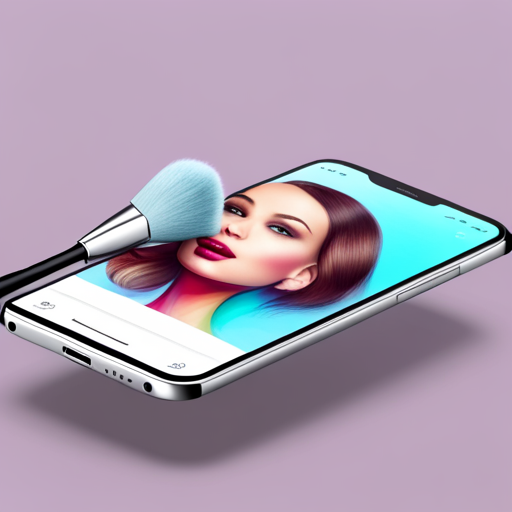
Options for Beauty Service Providers
In custom beauty mobile app development, it’s crucial to incorporate features that cater to end-users, beauty professionals, and service providers. These features facilitate day-to-day operations, streamline client management, and enhance service delivery.
In our work building the GoodSkin app, we found that the following features were precious for beauty service providers:
- Professional Profiles: This feature allows beauty experts to showcase their credentials, portfolio of work, specializations, and customer reviews. This helps build trust with potential clients and allows professionals to effectively market their services.
- Availability and Scheduling: Beauty professionals should be able to update their availability and manage appointments directly within the app. This helps reduce double bookings and ensures that professionals can manage their time efficiently.
- Order Management: A feature for managing orders for beauty products or supplies is crucial for professionals who provide services that require specific materials. This feature could include inventory tracking, order histories, and automatic reordering when supplies run low.
- Client Management: Tools for managing client information, including contact details, appointment history, and preferences, can help professionals provide personalized services and build strong client relationships.
- In-App Communication: Direct messaging or app chat features allow professionals to communicate with clients, answer questions, provide consultations, or discuss appointments.
- Reporting & Analytics: This feature gives beauty service providers access to critical data about their services, including the number of bookings, revenue, popular services, and customer feedback. This data can inform decision-making and help professionals improve their services.
These options, accessible via a web admin panel or a mobile application, are essential for beauty service providers and salon owners to start a beauty app successfully. They equip them with the necessary tools to operate efficiently, meet customer needs, and grow their businesses. By including these options, you can significantly enhance your app’s value to both professionals and end-users.
For those interested in exploring similar user-centric solutions in the health and wellness space, learn more about wellness app development to discover how these principles apply to fitness, meditation, and mental health apps.
Technology Stack for Beauty Apps
Choosing the right technology stack is a critical step in beauty on demand app development. Whether it’s for the mobile app or the back end, the selection of technologies should align with your application’s requirements and business goals. Here are some very high-level considerations:
- Cross-platform mobile app development: React Native and Flutter are two excellent options for developing high-performing apps on both iOS and Android with a single codebase. This could be a cost-effective and faster way to bring your product to market.
- Augmented Reality (AR) SDKs: AR can greatly enhance user experience, particularly in beauty apps where users may want to virtually try on makeup or hairstyles. For native Android and iOS applications, Apple’s ARKit and Google’s ARCore are industry standards. For web AR experiences, consider libraries like A-Frame or AR.js.
- E-commerce SDKs: If your digital product integrates an e-commerce portal, especially for selling beauty products directly from the app, consider SDKs like Shopify’s Mobile Buy SDK or WooCommerce’s REST API.
- Artificial Intelligence (AI) SDKs: AI can be leveraged to build smart chatbots for customer service, product recommendations, and more. TensorFlow, ChatGPT APIs, and Microsoft Azure Bot Service are some of the top choices in this category.
Remember, a well-chosen tech stack enables you to build a robust, scalable, and efficient beauty salon app that meets your users’ needs and business objectives.
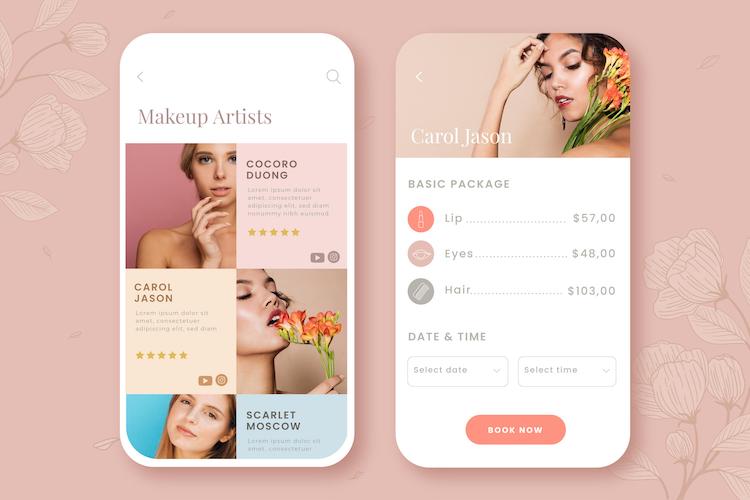
However, the final decision on the choice of technologies should ideally be guided by a professional development team. They can provide expert guidance and may recommend native mobile technologies or other specific solutions based on the required app performance metrics, unique features, and other technical specifications.
5 Steps to Create a Beauty App
Creating a beauty app is no small feat. It requires careful planning, research, and execution. While the exact process may vary depending on your specific requirements, here are some high-level steps to consider when embarking on this journey to make a beauty app:
| Step | Description |
|---|---|
| 1. Define Goals & Objectives | Identify user engagement metrics, revenue goals, and key features (e.g., booking services, product sales). |
| 2. Research & Competitor Analysis | Analyze user preferences, market trends, and competitor features to guide app design and functionality. |
| 3. Create an App Concept | Develop a prototype to visualize design and functionality, allowing for early testing and feedback. |
| 4. Choose the Tech Stack | Select technology that integrates seamlessly with existing systems, considering scalability and performance. |
| 5. Develop & Test | Build the app using Agile methods, test iteratively, and refine to ensure high quality before launch. |
Step 1: Define your goals & objectives
First, you must be clear about what you want to achieve with the app. This includes user engagement metrics, revenue goals, marketing objectives, and other KPIs to help measure your success. For example, you may seek beauty services mobile app development to:
- Increase visits to your beauty salons
- Enhance user experience through personalization
- Make it easier for customers to find and book services
- Create a platform that directly connects beauty professionals with potential clients
- Generate additional revenue from product sales or subscriptions
Once you know your overarching goals, planning the remaining steps will be much easier. Just make sure that these targets can be easily measured.
Step 2: Research & competitor analysis
Conduct thorough research to understand the existing market landscape, users’ needs and preferences, and competitors’ features & services. This information can guide you when designing & developing an app for beauty treatments.
A side note for steps #1 and #2
Ideally, by the time you approach your development team, you should have completed steps one and two, defining your objectives and conducting a comprehensive research. This preparation is invaluable and allows your beauty app project to hit the ground running.
Defining your goals and objectives provides an app development company with a clear direction and understanding of what the product should aim to achieve. It helps developers align their development strategy with your business goals and create a product that fulfills your vision.
Additionally, the research and competitor analysis you bring on board help inform your application’s design and functionality. An understanding of market trends, user preferences, and competitor offerings can guide the decision-making process, ensuring your app incorporates features that are not only relevant and exciting to your target users but also offer a competitive edge.
Remember, a successful beauty app is not just about coding; it’s a result of strategic planning and an insightful understanding of the market and user needs. Therefore, coming to the table with this information equips your development team with the right tools to build a software product that genuinely resonates with users and stands strong in the competitive beauty app market.
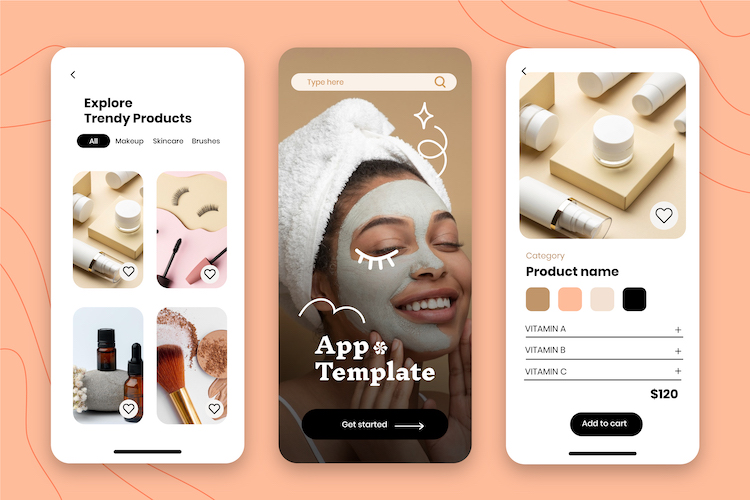
Step 3: Create an app concept
Based on your research, create a concept for the app that encompasses its core functionality and value proposition. To design a beauty app, creating an engaging, user-friendly interface with intuitive app navigation is crucial.
At Topflight, we employ a rapid prototyping approach to this process. Rapid prototyping is a process where we develop a preliminary visual mock-up of your app for beauty services, which represents the user interface and demonstrates the app’s functionality.
The benefits of rapid prototyping:
- Provides a tangible way to analyze app design and functionality early in development
- Facilitates early user testing, uncovering potential usability issues
- Ensures developers and stakeholders share a common understanding of the app’s design and functionality, reducing misunderstandings
By allowing stakeholders to provide feedback and suggesting revisions early on, rapid prototyping saves significant resources that would otherwise be invested in coding. It also visually displays the application’s flow and interactions, aiding in identifying potential usability issues not evident from a static design.
Remember, rapid prototyping is not about delivering a perfect initial version but about iterative refinement. Feedback from this stage should be used to refine and optimize your solution for the best possible user experience.
Bonus: check out an interactive prototype for this beauty app we developed.
Step 4: Choose the tech stack
After you have finalized the app’s design & architecture, select the appropriate technology stack to build it. This should be done in close consultation with a development team.
For on demand beauty services mobile app development, it’s vital to consider the technology infrastructure already being used in your organization. Ensuring that the chosen tech stack integrates seamlessly with your existing systems will ease the development process and prevent potential operational hiccups down the line.
Step 5: Develop & test
Finally, it’s time to build the app and put it through rigorous testing. This helps identify any bugs or issues that may need to be fixed before launch.
It’s important to remember that the development and testing stages are not linear but rather an iterative process following the principles of Agile methodology. This means that coding and testing are repeated in a continuous cycle until the product reaches the desired level of quality and functionality.
The process allows for regular feedback and adjustments, ensuring the final product closely aligns with your vision and requirements. So, don’t be surprised if this step takes several iterations of coding, testing, refining – and then some more coding and testing – until the beauty app is ready for release. By the way, using third-party off-the-shelf code libraries can significantly reduce the development effort and time.
These are some of the steps involved in creating a beauty app. Once you have gone through this process, be sure to validate your assumptions with actual users and fine-tune the app’s features (if needed) to maximize customer satisfaction.
Challenges in Beauty App Development and How to Overcome Them
Developing an on-demand beauty app is no small task. The journey from concept to launch is filled with various challenges that can test even the most experienced developers. Drawing on our experiences from projects like Geneium, GoodSkin, and JOOVV, we’ve identified some common hurdles that teams often face during the development of an on-demand beauty app. But don’t worry – every challenge presents an opportunity for innovation. Let’s dive into these obstacles and explore how to turn them into stepping stones for success.
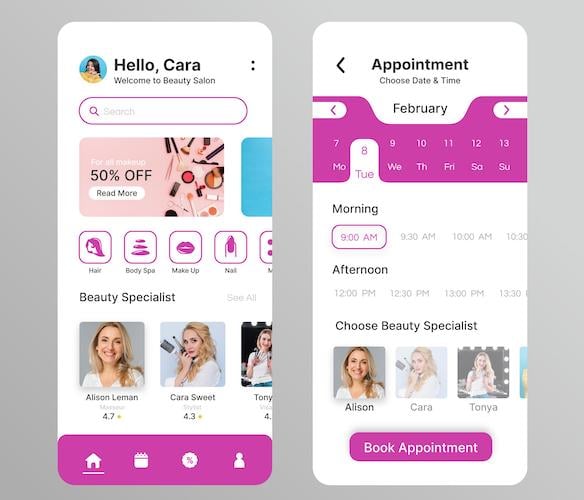
Personalization
Creating an application that addresses individual needs is a significant challenge. In our work with Geneium, we transformed bland PDF reports into engaging skincare routines based on DNA analysis results. Similarly, GoodSkin had to match services with customers’ areas of concern, ethnicity, age, and other physical attributes.
The Solution: Leveraging user data and integrating intelligent algorithms can help create an experience tailored to each user’s unique needs.
Integration with Existing Routines
Users are often reluctant to change their established routines. This was a consideration while designing Geneium’s platform, where we aimed to integrate it into existing skincare routines.
The Solution: Understand your users’ behavior and design the app to complement their existing habits, not disrupt them.
Engaging User Experience
Keeping users engaged is crucial for any app’s success. JOOVV faced this challenge when they needed their app to be more than just a remote control for their hardware.
Also Read: A Complete Guide to UI/UX Design
The Solution: Introduce gamification features that enhance user engagement, like goal setting, notification reminders, and session recovery.
Technical Compatibility
Ensuring compatibility with both legacy and new hardware can be tricky. JOOVV’s mobile software, for example, had to work seamlessly with their existing devices and the latest light therapy gadgets.
The Solution: A clean codebase and the right tech stack can help overcome compatibility issues. React Native, for instance, proved invaluable in creating cross-platform solutions that are simpler to maintain and upgrade simultaneously for iOS and Android.
Regulatory Compliance
Health and beauty apps often need to comply with various regulations, such as HIPAA for personal health information or IEC 62304 for IoT medical software, as was the case with JOOVV.
Also Read: HIPAA-Compliance App Development Guide
The Solution: Implement robust security measures like end-to-end data encryption and secure user authorization, and always stay updated on relevant regulatory standards.
In conclusion, while developing a beauty app comes with its fair share of challenges, they are not insurmountable. With careful planning, the right technology, and a deep understanding of your users, you can create a beauty app that stands out in the crowded marketplace. Ready to embark on this exciting journey?
Balancing User Experiences: Customer vs. Service Provider
In the realm of on-demand beauty service app development, one of the crucial challenges is considering the needs of not only the customers but also the beauty service providers. Both parties are fundamental to the business, each with its own unique requirements.
Customers primarily seek convenience, variety, personalization, and quality in beauty services. On the other hand, service providers require efficient scheduling, real-time notifications, secure payment processes (to manage payments), and a platform that effectively showcases their skills and services.
This raises a pivotal decision point: should you create a dedicated provider and customer app for each party or merge both user experiences into a single app? Factors to consider include:
- the complexity of features
- user interface design
- the potential for scalability
For instance, separate apps may provide a more focused user experience, catering to customers’ and service providers’ distinct functions and requirements. Conversely, a single platform could foster a more integrated service, with seamless interaction and communication between customers and providers, albeit with a more complex development process.
It’s vital to strike a balance that caters to both parties’ needs while maintaining a seamless, intuitive user experience. This task can be challenging but ultimately rewarding in creating a successful beauty service application.
Cost of On-Demand Beauty Services App Development
When considering the cost of developing an on-demand beauty services app, you should expect an initial investment in the ballpark of $80,000 to $130,000 to create a Minimum Viable Product (MVP). However, the actual app development cost can vary based on the complexity of the app, the number of features, and the technology stack used.
Related: App Development Costs: The Complete Breakdown
At Topflight, we employ our Vision-to-Traction System (VTS) to ensure efficient use of these resources. Our VTS is a strategic model that guides the development process from the initial concept to a market-ready solution, designed to create an on-demand beauty app.
With VTS, we begin by aligning your business objectives with the app’s functionality, ensuring a product roadmap that mirrors your vision for the on-demand beauty app. Following this, we move to the ‘Traction’ phase, executing the roadmap with a focus on the core MVP features that provide immediate value to the users of your on-demand beauty app. This approach allows for quick market entry and offers an opportunity to gather user feedback for future iterations of the on-demand beauty app.
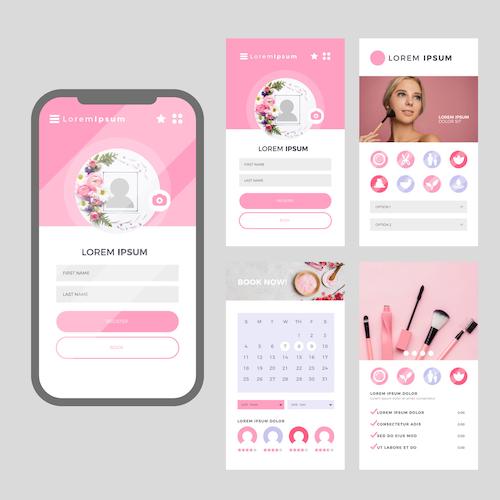
The benefits of VTS extend beyond cost and time efficiency for creating an on-demand beauty app. With its emphasis on early user feedback, it allows for an agile response to market needs and trends in the on-demand beauty industry. It also reduces the risk by validating the product on the market before significant investments in further development of the on-demand beauty app, ensuring that every dollar spent contributes directly to creating a product that your users will love and use for their beauty needs.
To the best of my knowledge, this software development offering stands alone in the market, offering a unique money-back guarantee for creating an on-demand beauty app.
If you’re wondering, “How much does it cost to launch a beauty app?” rest assured that by utilizing our VTS, your investment of time and resources in a beauty app project will lead to the successful launch of your on-demand beauty services platform.
Reach out to learn more about VTS.
Monetization Strategies
Monetizing your on-demand beauty app effectively requires a strategic approach that balances your revenue goals with the needs and preferences of your user base. Here are some commonly used monetization business models for beauty apps:
- Freemium Model: Offer basic app features for free, while premium features or content require payment. This model can encourage users to try your app and upgrade to access more advanced features later.
- In-App Purchases: Allow users to make purchases within the app. This could include buying premium content, additional services, or physical products related to beauty and skincare.
- Subscription Model: Provide access to premium services or content for a recurring fee. Subscriptions can provide a reliable revenue stream and encourage long-term user engagement.
- Sponsored Content or Advertisements: Partner with beauty brands or service providers to feature their advertisements or sponsored content within your app. This strategy can be a win-win, providing revenue for you and exposure for the brands.
- Partnerships and Affiliates: Partner with beauty brands or service providers to earn a commission from customer referrals or products selling through the app.
- Service Fees: Charge a fee for connecting users with beauty service providers. This can be a flat fee per transaction or a percentage of the service cost.
Leveraging our expertise in on demand beauty mobile app development, we have witnessed firsthand the positive impacts that a carefully crafted and user-centric app can have on the beauty industry, both for service providers and consumers, regardless of the monetization model you choose to earn money.
How Topflight Can Help
I already referenced a few projects where we helped our partners develop an on-demand beauty app, namely:
- Geneium
- GoodSkin
- JOOVV
Geneium: Upgrading the Daily Skincare Ritual
Geneium aimed to transform its lab-style PDF reports into an engaging, personalized digital platform that would inspire daily skincare routines. We worked on designing an app that integrates seamlessly into existing skincare routines and offers easy-to-interpret DNA analysis results.
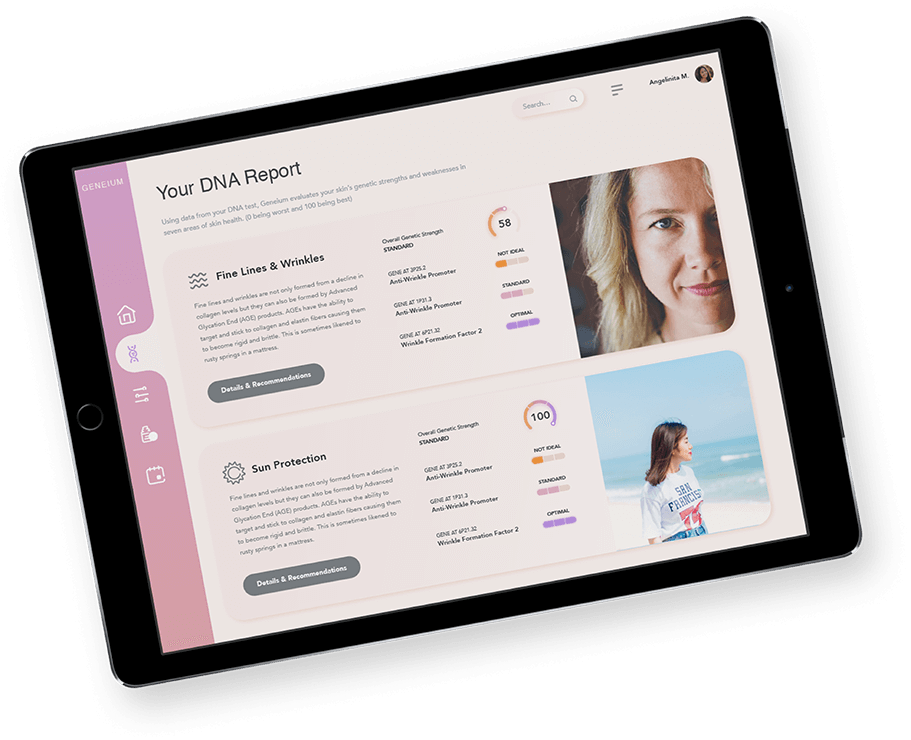 The app also provides product recommendations and hyper-targeted product suggestions and allows for easy sharing of customer data with dermatologists and other medical professionals.
The app also provides product recommendations and hyper-targeted product suggestions and allows for easy sharing of customer data with dermatologists and other medical professionals.
- The result? A scalable platform that drives higher engagement rates and empowers customers in their skincare routines.
GoodSkin: Treatment Planning App for a MedSpa
GoodSkin Clinics sought to innovate the traditional Medspa experience by combining patient and practitioner experiences in one app. Our solution was an app with features tailored to both GoodSkin staff (treatment plans, online payments, quotes sending, loyalty program management) and patients (service reviews, before/after samples, educational videos, quote requests, chat with a representative).
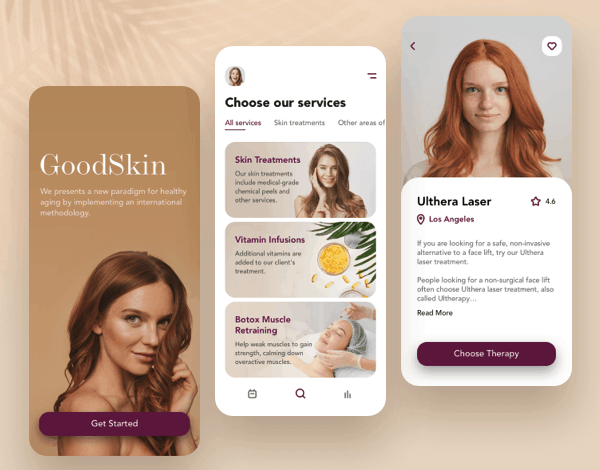
Additionally, we added a personal touch by matching GoodSkin services with customers’ unique attributes.
- The outcome? An app that enhances the shopping experience, streamlines treatment planning, and simplifies payment and loyalty program management.
JOOVV: Light Therapy App
Joovv needed a next-gen companion app for their brand-new light therapy devices. We developed a new app that works equally well with Joovv’s legacy devices and its latest hardware.
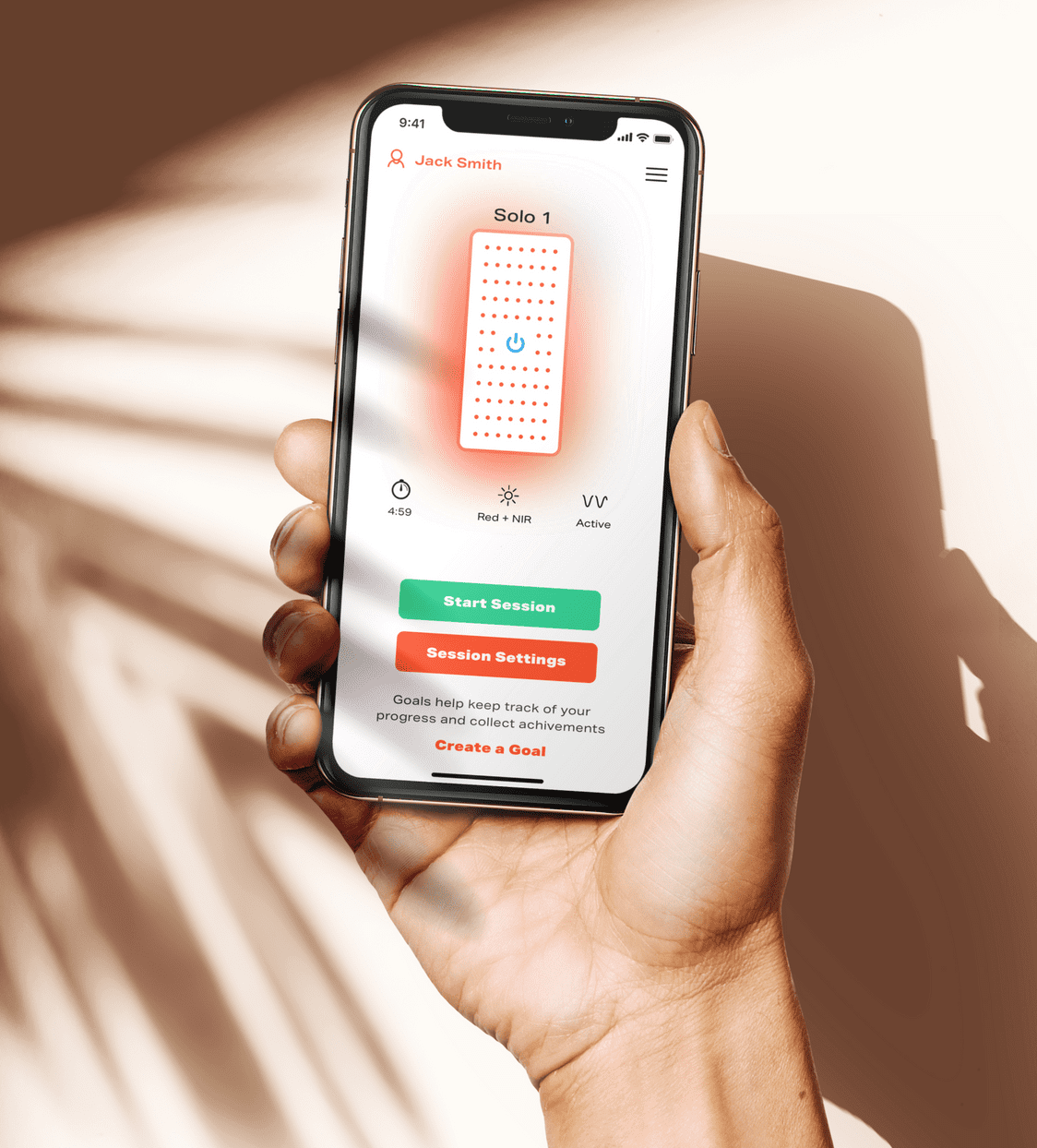
The app was enhanced with features like goal setting, notification reminders, and background processing & session recovery. To ensure compliance with HIPAA and IEC 62304 standards, we implemented end-to-end data encryption, secure user authorization, and forced data transit over secure connections.
- The result? A comprehensive light therapy assistant that enhances user engagement and offers premium service.
Whether you’re looking to innovate an existing beauty service or create something entirely new, leveraging the right technologies and strategies can help you successfully build an on-demand beauty app that not only fulfills the needs of your users but also revolutionizes the beauty industry.
Frequently Asked Questions
How can I ensure on-demand beauty apps stand out in the crowded marketplace?
Understanding and addressing your target users’ needs is key to making your app stand out. This could involve offering unique features, having an intuitive user interface, or providing excellent customer service. Additionally, leveraging advanced technologies like artificial intelligence (AI) for personalized recommendations or augmented reality (AR) for a virtual ‘try-on’ experience can set your app apart.
What is the relevance of user experience (UX) in beauty app development?
In the hyper-competitive beauty industry, a frictionless and engaging user experience (UX) is critical. It’s not just about aesthetics but also how easily users can navigate your app, find information, and perform tasks. A well-designed UX can increase user engagement, boost conversions, and foster customer loyalty.
What technological infrastructure should be considered for beauty app development?
The choice of technology stack relies heavily on the app’s requirements. However, essentials typically include a robust back-end platform (like Node.js or Django), a database (like MySQL or MongoDB), cloud services for data storage and scalability (like AWS or Google Cloud), and front-end technologies for Android (like Kotlin) and iOS (like Swift). Furthermore, for beauty apps, adopting AI and AR technologies can significantly enhance the user experience.
How do we prioritize features during the beauty app development process?
Feature prioritization should be dictated by your business goals and user needs. Identify the core features that align with your unique value proposition and user expectations. Start with a Minimum Viable Product (MVP) featuring these core functionalities, then gradually add more features based on user feedback and market trends. This approach mitigates risk and ensures that development efforts are focused on features that offer real value to users.
What is the time and cost to develop an on demand beauty app?
The time and cost for developing an on-demand beauty app can significantly vary depending on the complexity and features of the app. However, based on our previous projects like Geneium and GoodSkin, a basic version of an on-demand beauty app can take around 3 to 6 months and cost upwards of $150,000. The timeline and cost can increase with the addition of complex features, integrations, and if the app requires compliance with certain standards.